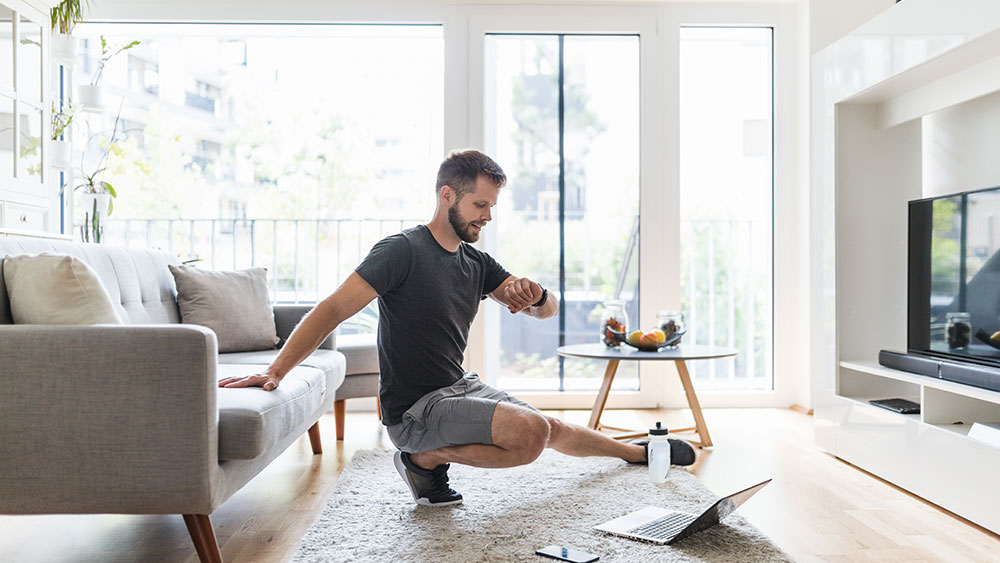Ever gone to one of your regularly scheduled physical therapy visits and heard your therapist refer to the medical abbreviation “WNL”?
WNL is an abbreviation for a medical term that stands for “within normal limits.” It’s typically something you want to hear your virtual physical therapists use during your sessions. This medical abbreviation can be used by different types of health care providers to describe the status of a part of the body. It’s mostly notated on medical notes and records.
Virtual physical therapists will likely refer to this medical abbreviation just as any other medical care provider will. Just because they’re seeing you through your computer or over the phone doesn’t mean that they aren’t capable of professionally examining the state of your physical condition. To learn more about how a virtual physical therapist might use the medical abbreviation WNL during a health assessment, keep reading below.
Why might you hear your virtual physical therapist use the abbreviation WNL?
- To note that an aspect of your physical health is within normal limits — For a part of the body to be within normal limits, it has to be within good functional capacity when the health care provider examines it. During a virtual physical therapy session, your physical therapist may ask you to perform a series of movements. These can be done through your video camera. Your therapist will take some time to examine your physical performance. This includes how your joints, ligaments and muscles are able to move smoothly. After you perform these movements, they’ll be able to proceed with a personalized treatment plan according to how well each of your body parts function. Ideally, healthy body parts will be labeled by your health care provider under the medical abbreviation WNL. The goal of your sessions is to improve your physical health until it can be comfortably deemed “within normal limits.”
- To note that an aspect of your physical health is outside of the normal limits — When a virtual physical therapist notes that a certain aspect of your physical health isn’t WNL, that means it isn’t within a standardized set of recommendations that indicate good functionality. It may indicate an injury, an area of weakness or a region with limited mobility, to name a few. These are aspects that need to be addressed through treatment with your virtual physical therapist.
What are some examples of things that people should want their therapists to be saying is “WNL”?
- Joint flexibility — Joint flexibility is one example of an aspect of the body that you want your virtual physical therapist to say is within normal limits. It’s important to maintain good joint flexibility to be able to move your joints comfortably, like bending your wrists, knees, elbows, back, hips and much more.
- Range of motion — Range of motion is another one of those things that your physical therapist might describe as being within normal limits. A good range of motion is necessary to be able to carry out basic movements like turning your head, walking up steps, or lifting an arm without any pain or stiffness.
- Muscle strength — Your physical therapist will also examine your physical state to determine the condition of your muscle strength. If your muscle strength is where it should be, your therapist may use the medical abbreviation WNL to mark your status.
How can virtual physical therapy help you get to WNL status?
- Building joint flexibility — Joint flexibility is one example of an aspect of the body that you want your virtual physical therapist to say is within normal limits. It’s important to maintain good joint flexibility to be able to move your joints comfortably, for example, to bend your wrists, knees, elbows, back, hips and much more.
- Improving range of motion — Virtual physical therapy can also help improve your range of motion so that you can achieve WNL status. If you struggle to move a part of your body that you should be able to, virtual physical therapy may be able to help you overcome challenges like this.
- Increasing muscle strength — Virtual physical therapists can also work with you remotely to help build your muscle strength. They can guide you through strengthening movements and weight-training exercises to help you get to “within normal limits” status.
Why choose Agile Virtual Physical Therapy?
Agile Virtual Physical Therapy can offer more than 400 licensed clinicians. We’re committed to providing effective PT care through our telehealth platform. At Agile Virtual PT, we provide services in 45 U.S. states and free virtual screenings. For more information including our many partnerships, read here.
At Agile Virtual Physical Therapy, we have experienced professionals who are qualified to create a personalized plan with you containing at-home physical therapy exercises customized for your age and fitness level.
Contact our team today for more information or to schedule an initial appointment.

